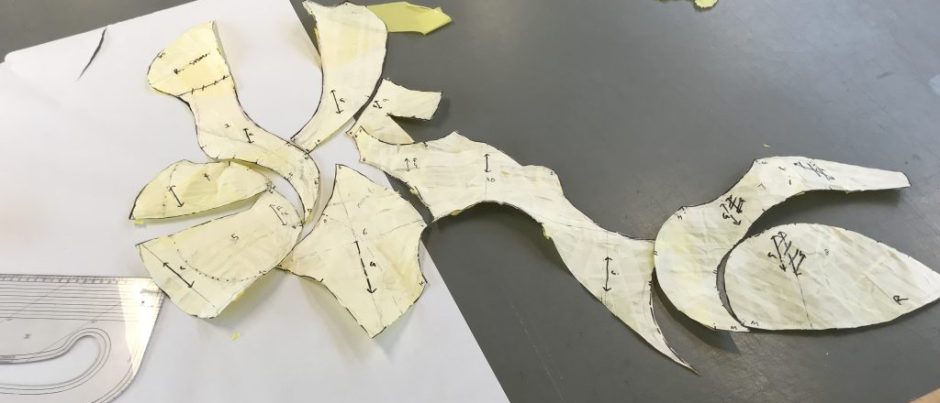With no data to work with from workshop one, I only have workshop two’s data to use (other than the lack of attendance itself). The validity of this data could be called into question, as there were only two participants in attendance at the second workshop. However, useful information for future research be drawn from the lack of participants n this research, and some speculations could be made in it’s analysis.
Filtering the Data: Sieves
I used the same type of coding for this part of the research cycle, eventually equating different elements of the garden analogy to this data set. However, as this is now not just speculative, it is in response to the intervention itself, I am going to add additional codes, and note the number of student interactions with this intervention (in this case, attendance):
- Additional: Engagement with concepts of sustainable practice – Green
- Additional: Student interaction (numerical data)
- Positive remark – Yellow
- Negative remark – Pink
- Idea or suggestion – Blue
- Underlying issues or challenges – Grey
Synthesising the Data: Spectacles
I have then visualised this, below, using image and text together. The ground represents the underlying understanding of sustainable practices (underlying issues) relating to question 3, The sun represents the positive responses towards the intervention, the air-bourne pollutants represent the negative responses (to questions 4, 5, and 6). The plants represent the student population. A ‘healthy’ environment will have plenty of sunshine, no pollutants, and plenty of rainclouds to make rain from, and develop the idea further.
I have created a key, below, which will allow me to use my data to reveal an overall ‘garden’ landscape of responses to each intervention design, in order to evaluate and disseminate it. I will be able to utilise this design to synthesise and combine data revealing students’ actual engagement with these interventions later on.
FLOWERS (Numerical)
An additional data image, these represent students’ active interaction with an intervention
LEAVES (Green)
An additional data image, these represent student’s positive engagement with an intervention
SUN (yellow)
The sun represents positive responses. Each ray equates to one positive student response.
POLLUTING PARTICLES (Pink)
The polluting particles represent negative responses or barriers to the intervention designs.
SLUGS (Grey)
These represent responses which indicate underlying issues which may create barriers to students engagement with an intervention. They are part of the ecosystem, but must be addressed and managed in order to students to flourish towards sustainable practices.
CLOUDS (Blue)
These represent ideas or suggestions generated by the students, which could be used to further develop the intervention design.
A ‘healthy’ environment will have plenty of sunshine rays and clouds, no pollutants, plenty of flowers and leaves, and few or no slugs.
Evaluation
Here are the intervention data gardens, below:


Salient Data
Absence of Data
Synthesis of Themes
- This intervention may be deemed entirely as unsuccessful in meeting its aims, as attendance was so low. Finding ways to improve attendance, or investigating why students do not attend could be a next step, and/or improving the design of this intervention.
- Attendees began to engage in and connect with sustainable practices within workshop two
- Attendees were interested in more workshops
- Response to the workshop was very positive
References
